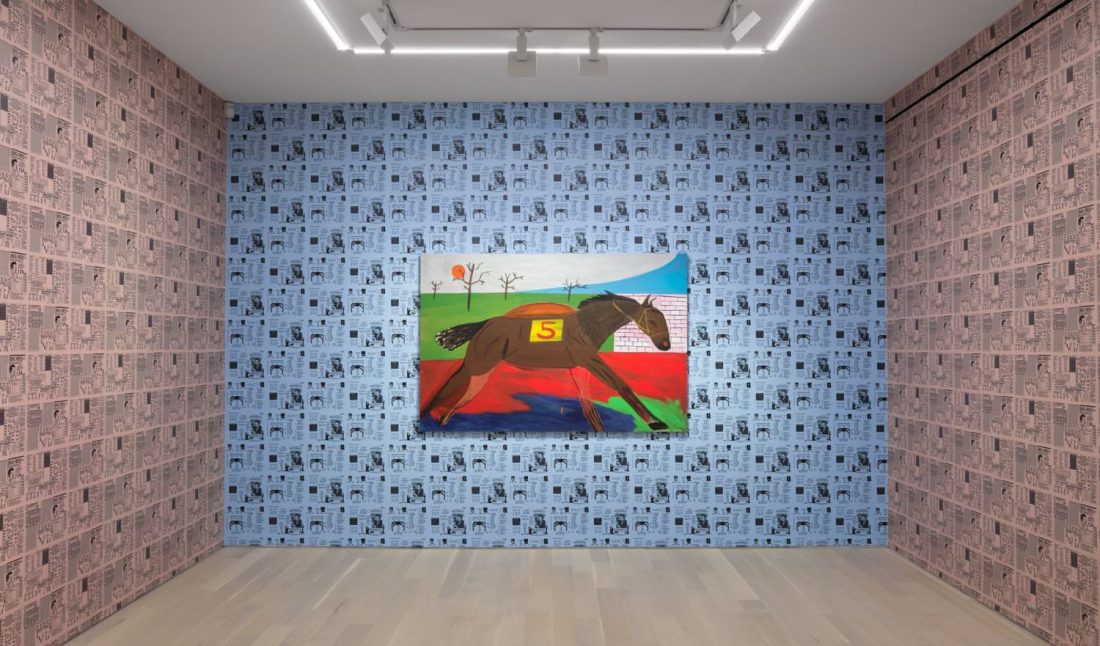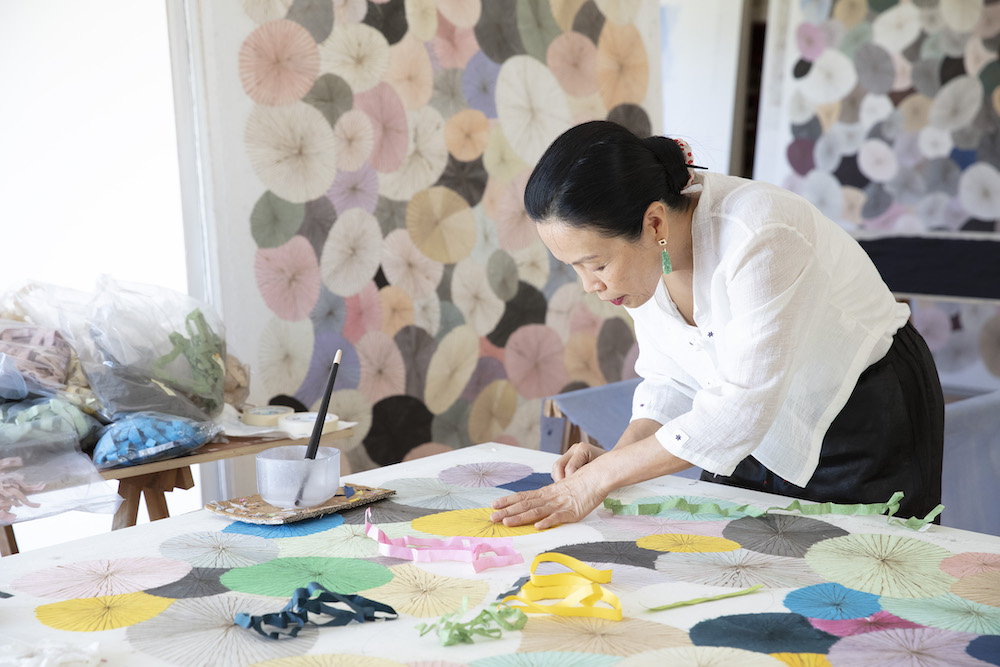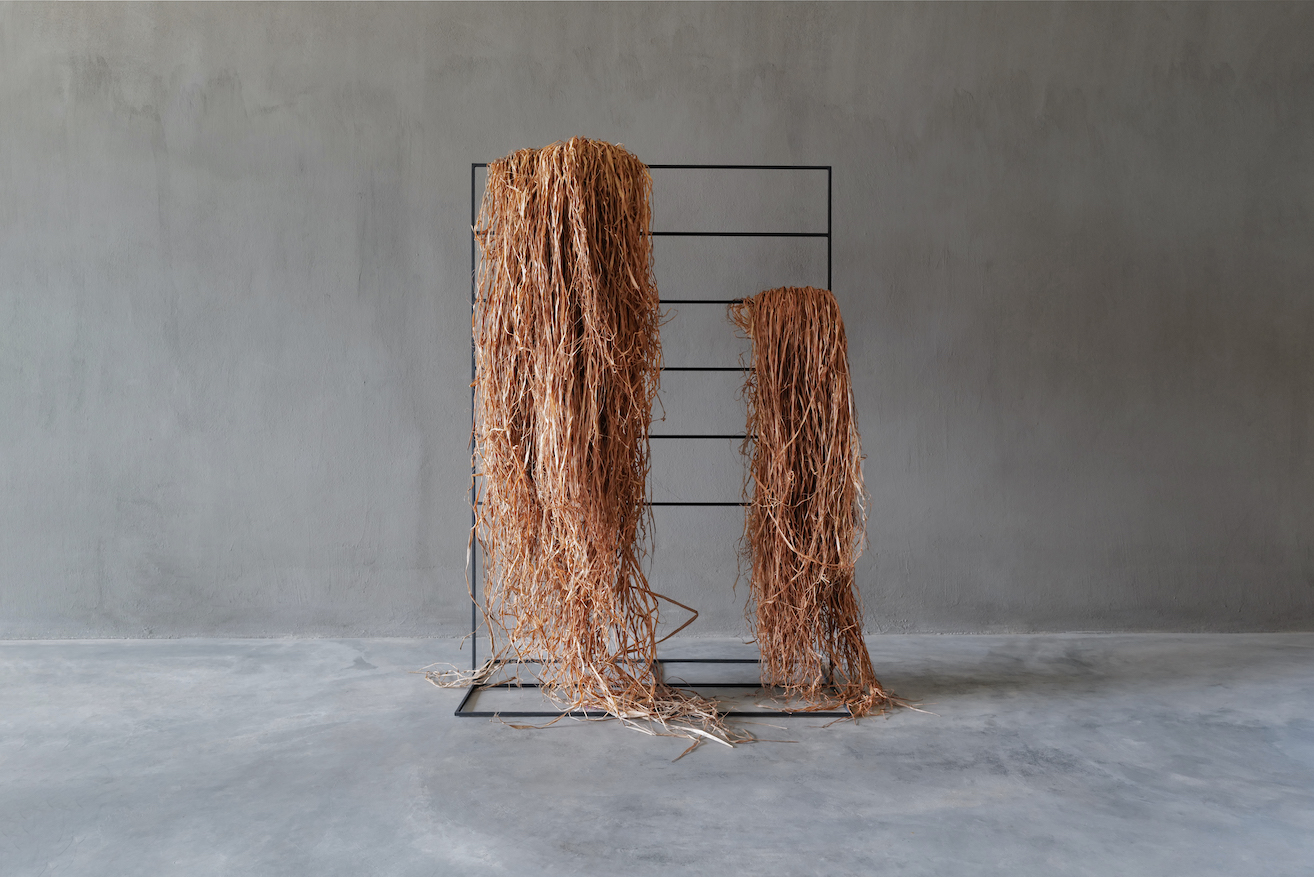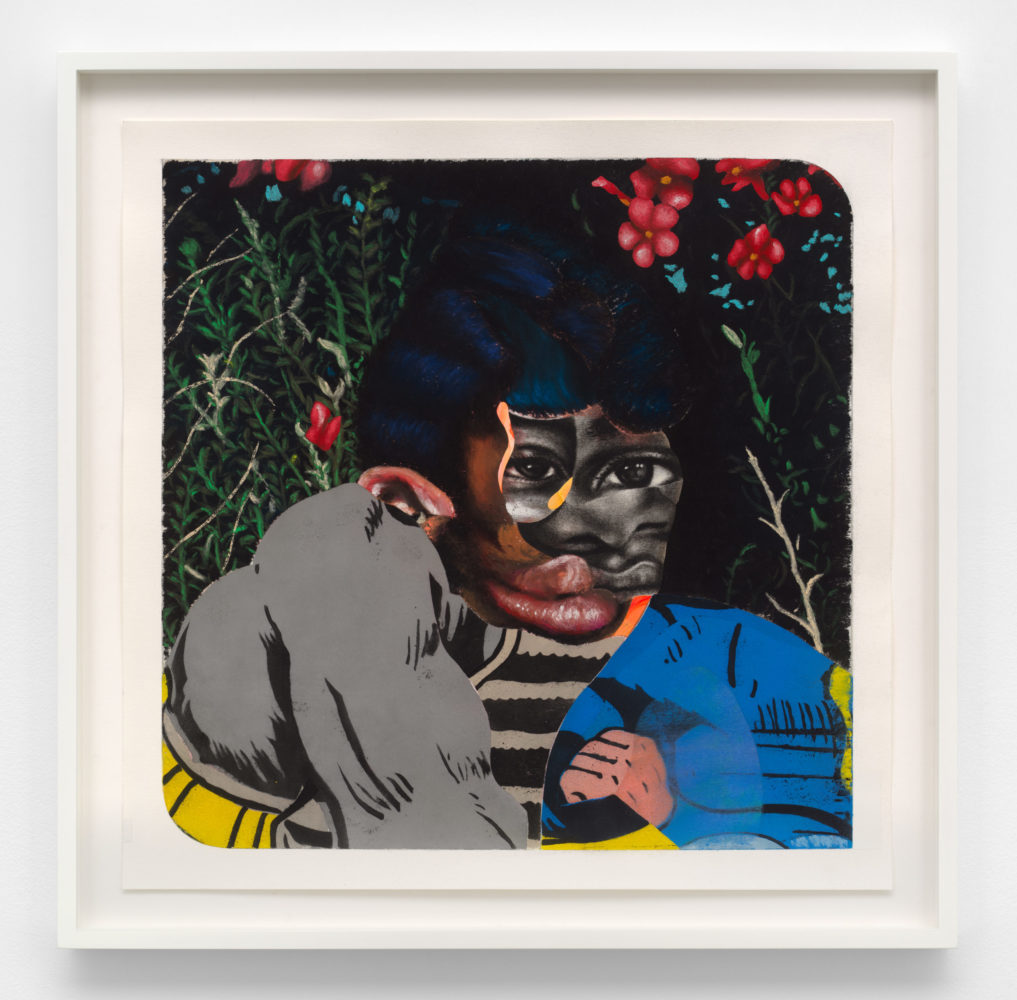Growing up in Brooklyn’s Prospect Heights neighborhood, artist Marcus Jahmal saw scenes of rich Caribbean culture and illegal gambling—number sheets, men throwing dice in alleys, and his grandmother carrying around black-eyed peas for good luck. Fast forward to the present day, and Jahmal considers himself to be a gambler, too—but of the artistic variety. Jahmal’s latest body of work, “Double Down” at Almine Rech through October 19, was inspired by these memories, and the risks one takes to further their career as an artist.
Whitewall spoke with the artist to hear more about the show, and how he links his work to real lif.
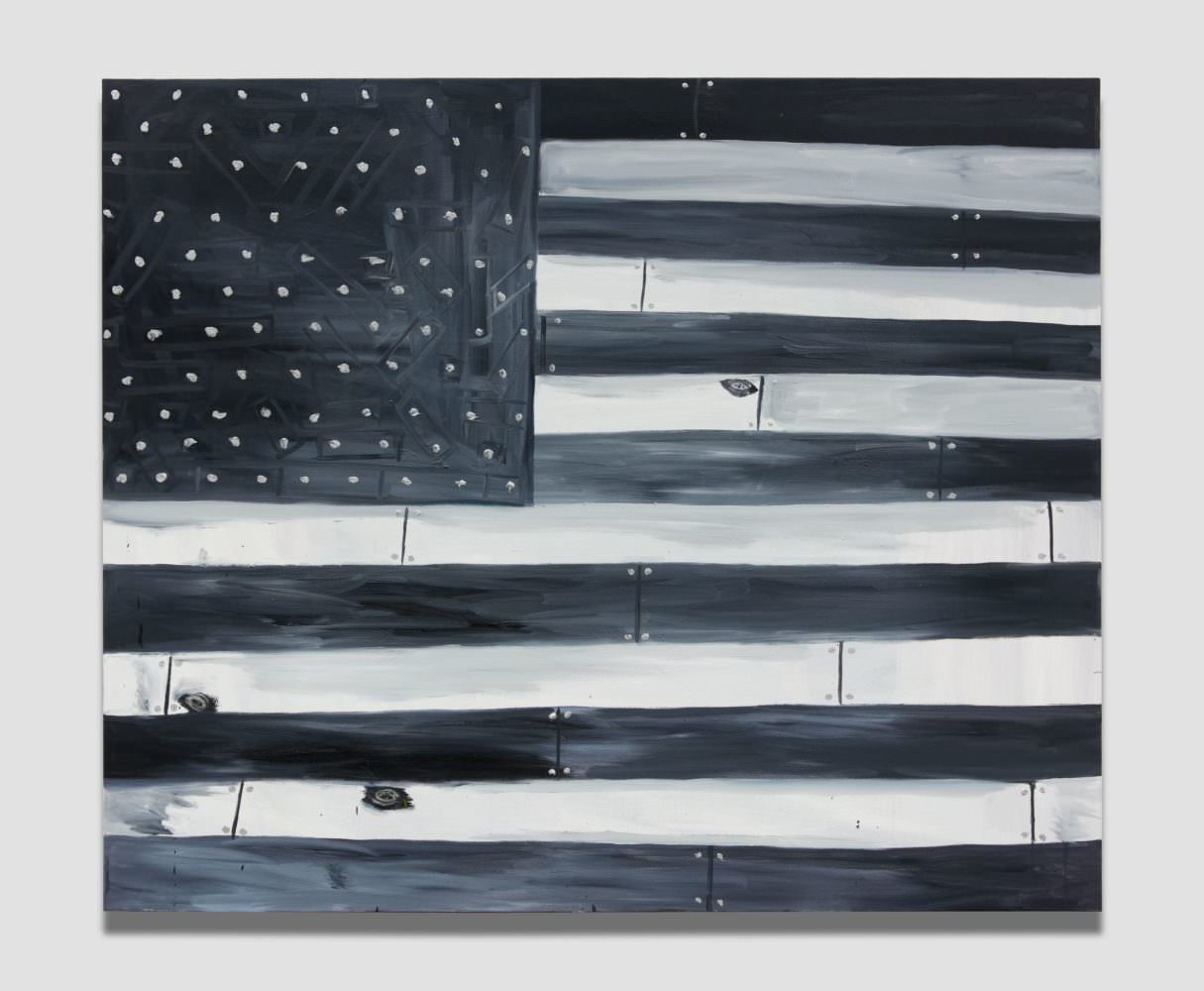 Marcus Jahmal
Marcus Jahmal Divide
Courtesy of the artist and Almine Rech.
WHITEWALL: Tell us a bit about your latest exhibition, “Double Down.”
MARCUS JAHMAL: It is my second New York solo exhibition, second show with the gallery, and the exhibition spans two rooms.
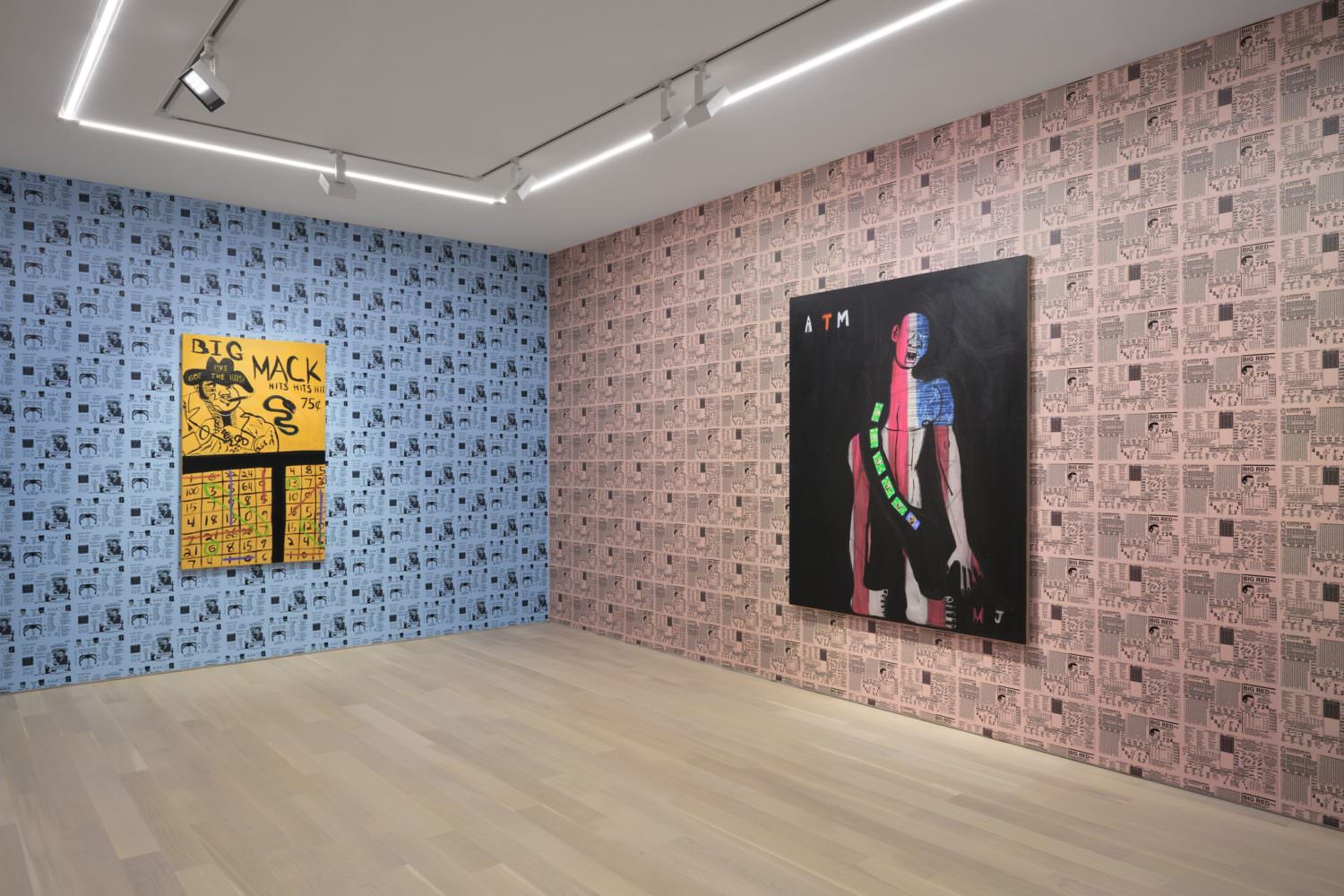 Marcus Jahmal
Marcus Jahmal Installation view, “Double down”
Courtesy of the artist and Almine Rech.
To “double down” is to strengthen your efforts at a potentially risky moment, and I think it’s very fitting in our current political climate and where I’m at in my career.
WW: The show is based on your childhood memories of the gambling that went on in your neighborhood, but also creates a parallel narrative on the career of an artist. How did you first make this connection?
MJ: As an artist, there’s something particularly exciting about opening an exhibition in your hometown. I grew up in Brooklyn, and for me, it was a very different place than it is now—in the post-gentrification era. This led me to dig and conjure up memories of what it was like before and try to convey this feeling.
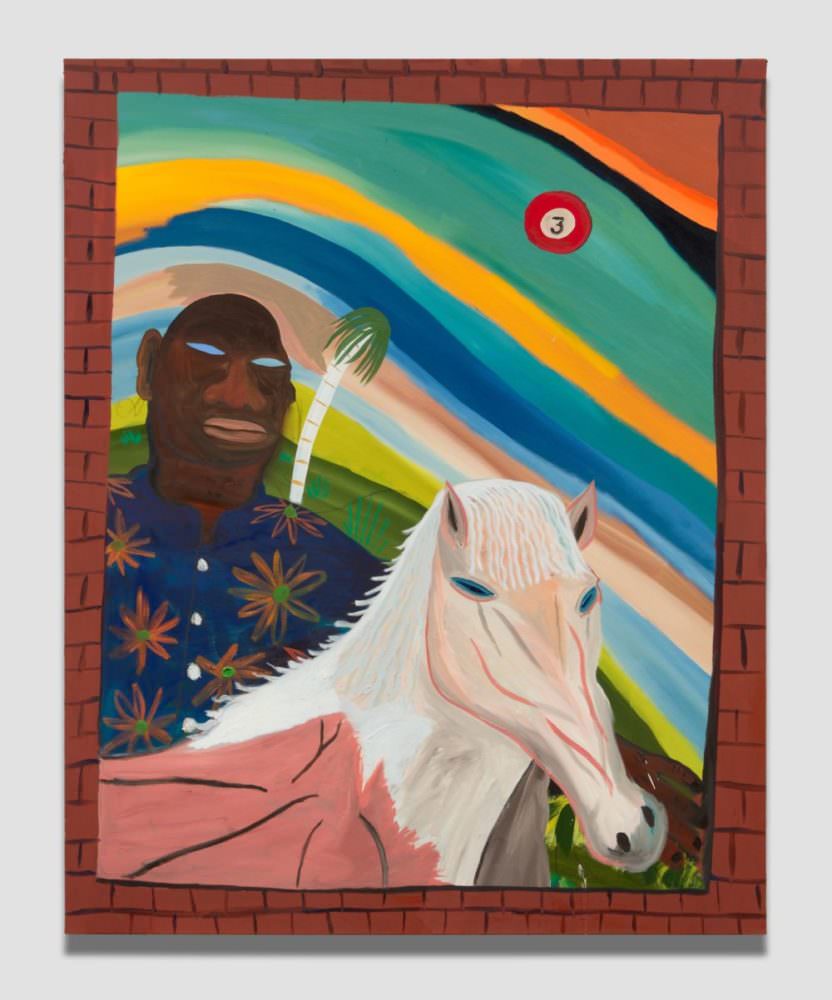 Marcus Jahmal
Marcus Jahmal Caballo blanco
2019
Oil, acrylic and graphite on canvas
60 x 48 in
Courtesy of the artist and Almine Rech.
There was a stronger sense of community and togetherness. Gambling came up because it’s such a prevalent activity in black and latino communities around NYC—from the young guys outside playing cee-lo, to the older people playing lottery and illegal numbers. People turn into adults and the impulse of play never leaves.
I feel like that’s a lot like an artist. Our inner child wants to play and create and take risks in return for a greater gain.
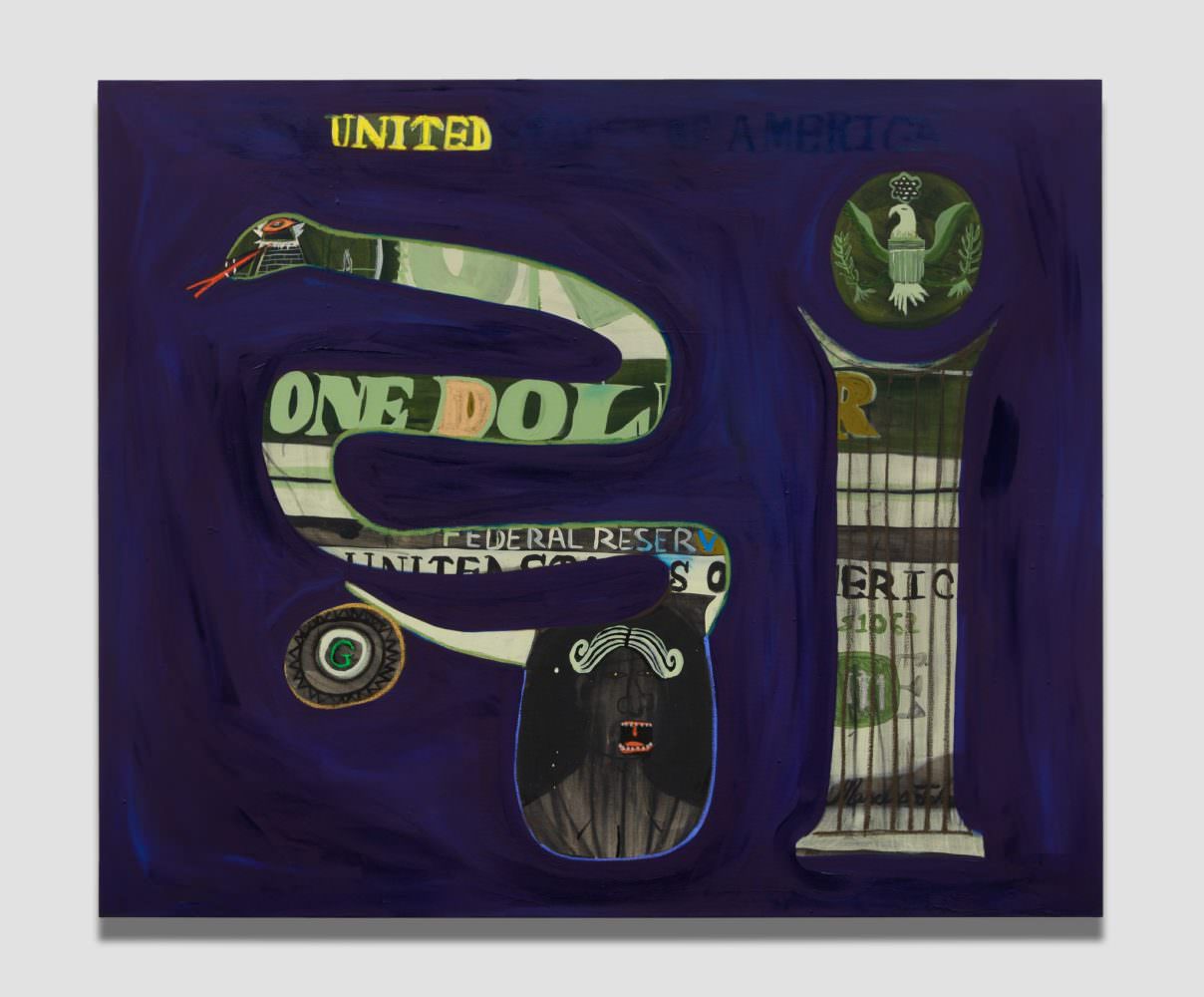 Marcus Jahmal
Marcus Jahmal United Snakes
2019
Oil, acrylic and oil pastel on linen
60 x 72 in
Courtesy of the artist and Almine Rech.
WW: The exhibition features new paintings and includes a site-specific installation. What can you tell us about that aspect of the show?
MJ: With this exhibition, I’m allowing more media to permeate the work. One room is covered with a wallpaper. It’s an appropriation of a daily numerology publication called BIG RED that is sold in inner city bodegas around NYC. It’s based on past lottery and horse race results, and people use them to pick lottery numbers, and for illegal gambling.
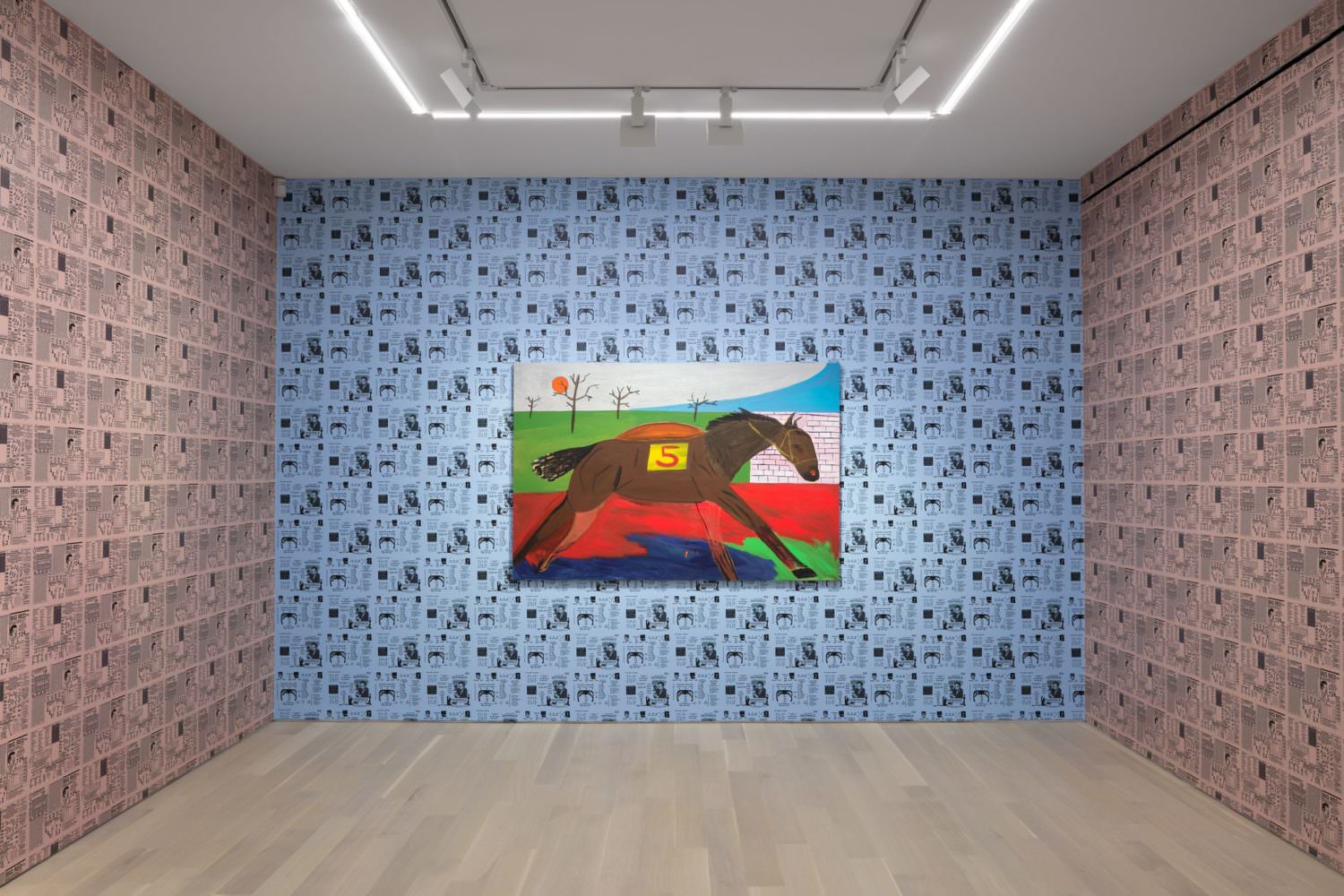 Marcus Jahmal
Marcus Jahmal Installation view, “Double down”
Courtesy of the artist and Almine Rech.
They are, for me, a ready-made—the graphic composition of the sheets and the humorous quotes that are printed on them. The wallpaper changes the gallery context into something that’s linked to marginalized areas in NYC, like an old-school numbers hole.
WW: You said most of the figures in your works have a link to real life. Can you tell us more about how you choose each subject?
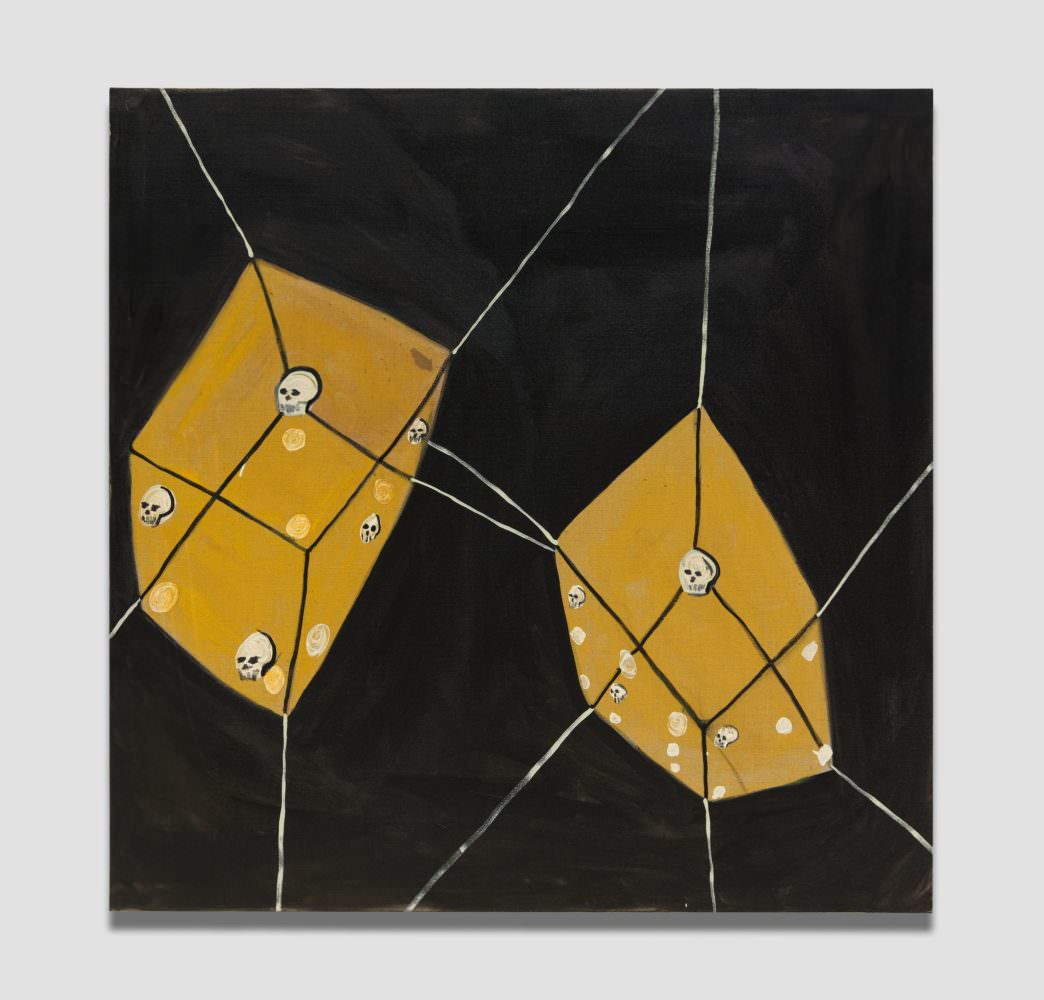 Marcus Jahmal
Marcus Jahmal Tesseract
Courtesy of the artist and Almine Rech.
MJ: I paint subjects that draw up a memory—portraits of my dog and most recent muse, Ali, in addition to my brother, ex-lovers, and auto portraits.
Then there’s the flag and the dollar bill. I’m trying to better understand the connection between American iconography and what it really means.
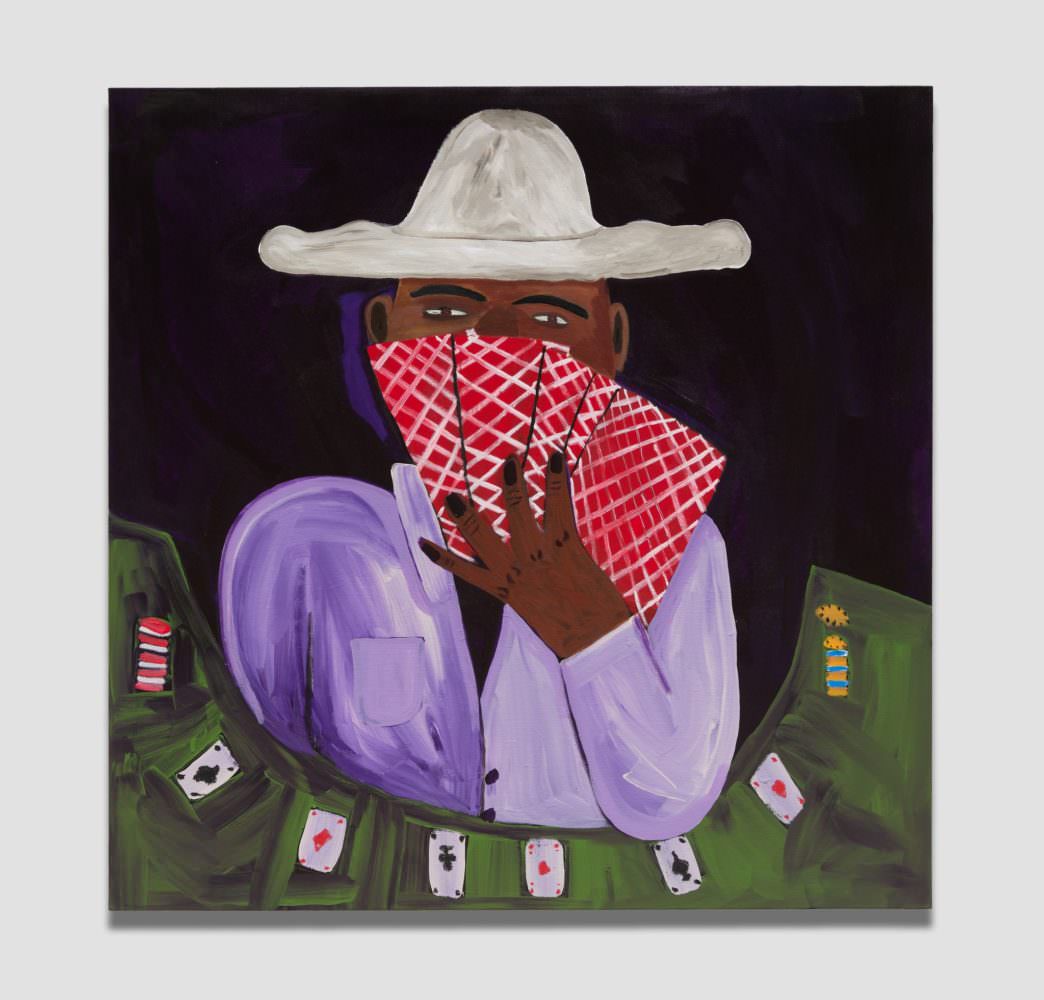 Marcus Jahmal
Marcus Jahmal High Roller
2019
Acrylic on linen
48 x 48 in
Courtesy of the artist and Almine Rech.
Painting is the best way to observe something. By replicating the dollar bill, I saw things that most people don’t notice with the normal handling of it—like the spiderwebs and the small owl in the top right corner of the bill.
WW: Tell us a bit about your creative process. What were you aiming to achieve?
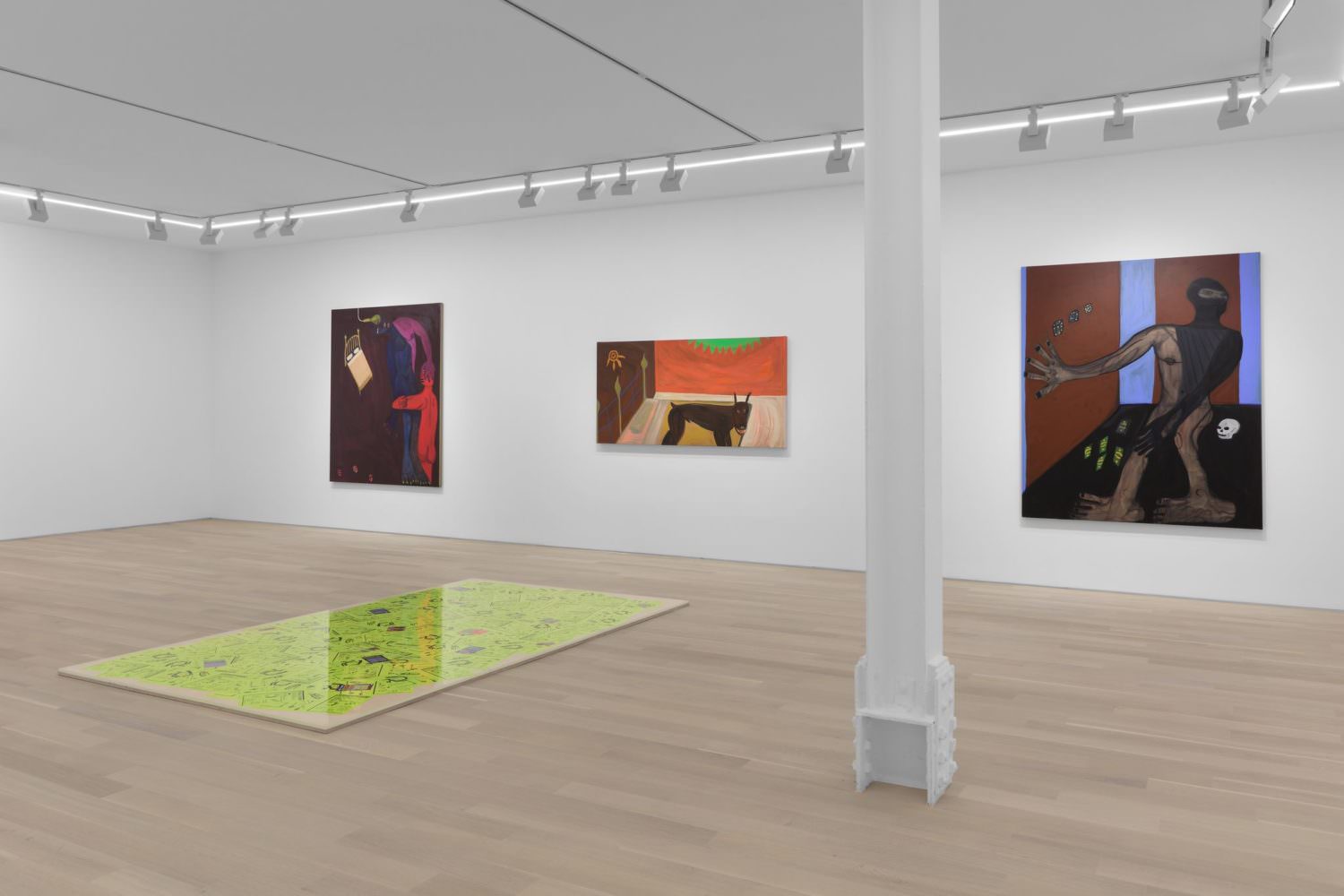 Marcus Jahmal
Marcus Jahmal Installation view, “Double down”
Courtesy of the artist and Almine Rech.
MJ: My palette for this show is more muted. I’m focusing more on process; tension between thinly applied transparent paint and thick opaque dark hues. I’m attempting to close the gap between process and content, conveying the mood of the subject through varied gesture and color choices.
WW: The exhibition seems to be largely inspired by your childhood. Do you have a favorite memory that you’ve incorporated into the show?
MJ: The media from the wallpaper would be a stand-out memory. As a child, I would see these numerology pamphlets everywhere, even in my grandmother’s house. They were so graphically interesting, with figures, text, and numbers—almost like a comic book.
Before I had any encounters with an art museum or learned about painting, it served as a visual stimulus. So, for me, it was exciting to incorporate this into the exhibition. Nina Simone once said that an artist’s job is to reflect the times at hand, and this show is how I’m demonstrating that.






